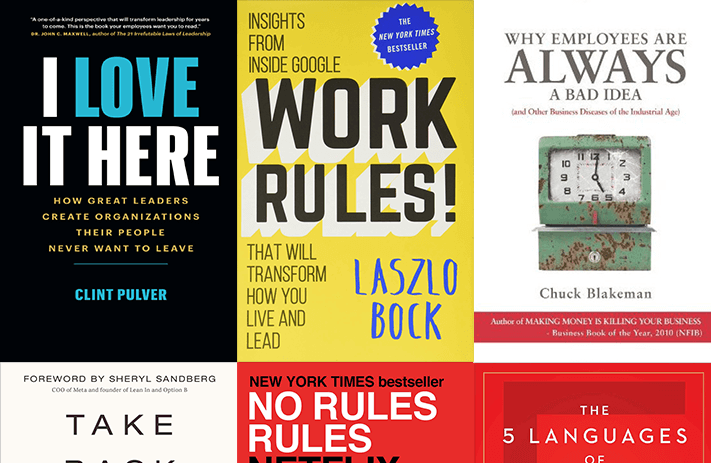
Click the button to start reading
How to Motivate and Engage Unproductive Employees
It feels like an ungrateful response. You pulled out all the stops to hire a team with the desired sets of skills, experience, and personal characteristics. You’ve trained them properly with high hopes for performance and business growth.
But now you have to face the reality: several employees don’t live up to your expectations. They just aren’t getting the job done.
You can tell when an employee isn’t productive, right? Always having an excuse, playing the victim, putting things off, taking extended breaks, complaining all the time… Drudgery and underperformance start affecting the entire workplace. Resentment and negativity are spreading. Gone untreated, low productivity can hurt the bottom line and damage morale. You need to put employee productivity first and fix the situation as quickly as possible.
But how to handle unproductive employees? Do you fire them, or do you re-energize your team and re-engage them with the business priorities?
Below you’ll find six easy-to-follow steps to motivate your employees and maximize the productivity of your workforce.

Step 1: Find the underlying cause
It’s easy to focus on the symptoms instead of curing the disease. If you ignore the problem, make ungrounded assumptions, threaten the employees or immediately burn all the bridges, you may unnecessarily lose a valuable employee. Let’s admit that it’s not the best way to address things.
Effective leaders know that there might be an underlying reason for negativity and poor performance. What’s more, they know that if the root problem is organizational, it’s likely to recur. You can’t blame your unproductive employees for the absence of reliable systems and performance management tools.
Before accusing your people, get close. Schedule a meeting. Approach the conversation from a friendly stance and discuss specific examples of performance issues. Let them talk. You may find, to your surprise, that it’s all about being burned out, underpaid, or undertreated. Other times, it can be a missing resource, lack of guidance, a pressing need for flexibility, or a workplace conflict that undermines performance. Frequent distractions and the inability to focus are yet other reasons to watch out for.
As a manager, it’s your responsibility to uncover these reasons and seek effective solutions. Even if unproductive employees eventually quit, it’s comforting to know that you did everything you could to help them carry some of their load.
One final hint: listen to what your employees have to say – just the way you do in the case of your customers.

Step 2: Set clear expectations
Motivating unproductive employees means helping your team feel their best and perform their best. Did you even lay out your expectations upfront? Do your employees know what’s expected of them? Yes, they have their job descriptions, but it’s far from being sufficient.
Set up performance improvement targets. Have guidelines and provide a timeline to help employees achieve the final goal. As you proceed, try to identify where they’re falling short and offer support.
Especially when dealing with unproductive (hence, unmotivated) employees, the set milestones should be achievable. This will build trust and remove reluctance; your staff members will know what is required of them and see that you’re willing to help. Stay flexible. Periodic check-ins and progress monitoring will help make further adjustments in the performance targets.
Reinforce accountability and be honest. Consequences should be crystal clear if the employee fails to demonstrate enthusiasm and progress.
Step 3: Create competition
If people don’t feel any urge to show high performance, they won’t. After discovering the root causes, clarifying your expectations, and providing sufficient support, you can evoke the competitive spirit at the workplace – one of the most enjoyable ways to motivate unproductive employees.
This approach might not be self-evident, but there is science behind such a technique. In fact, it’s deeply rooted in our psychology to enjoy overcoming a challenge. Thus, when we receive a stimulus to do things differently, we most often reveal the player inside us. Sparking competition among departments or within a team is a great strategy to push the employees further; they start working more passionately purely because they want to win.
A word of caution here. You should do this carefully to keep the competition healthy without compromising camaraderie.

Step 4: Provide encouragement
Who doesn’t love promotion, praise, and recognition?
Motivating unproductive employees may simply require a carefully thought-out program of regular incentives. Acknowledge the wins and celebrate achievements (even the small ones). The gesture of showing your care and excitement about an employee’s success will prove to be so rewarding.
We hear your objection: “I’d love to, but it’s not in my budget.” But it doesn’t even have to be a financial reward. Think about other ways of providing incentives. Generous paid time off, more flexibility in schedules, employee celebration, more learning opportunities – all these can add a positive vibe and help them avoid the trap of negativity.
Encouragement can be as big as an increased salary and as small as an inspirational speech. Refine your communication tactics when it comes to talking to your team. Positive messages will boost employee morale. Enhanced morale will lead to increased productivity at the workplace. It’s a positive loop, and everyone will surely enjoy it. When going to your next meeting, use the opportunity to connect and inspire; include something positive and inspirational into your messages.
Oftentimes, employees struggle because they feel that their efforts don’t matter or that no one cares about their success. It’s vital to help them understand that their contribution is valuable. You might say, “I trust your ability to take up this task. I’m sure you’re the best fit to pull this off!” Positive labeling will give your employees a reputation they would want to live up to.

Step 5: Utilize employee feedback
No two employees are the same. With all of the personality and character diversity, some employees are simply looking to make their mark. They’re ambitious, and mediocrity is no option for them. Give this employee a chance to speak up and make sure you cater to those individual, specific needs.
Open the doors. Provide a safe environment for everyone to share insights. Trust your employees’ competence and professionalism. Listening to your employees’ opinions and engaging them in decision-making are potent moves to boost their self-worth. When they know they have a say at the table and their voices count, this spikes up their self-confidence. All of a sudden, an unproductive employee turns into a passionate worker and a corporate ambassador for years to come.
If you’re skeptical about this point, consider the following highlight: this approach catalyzes a manager’s listening skills and pinpoints high-level struggles that would otherwise remain unnoticed.
Last but not least, motivated employees will put your efforts back into the business because an engaged workforce also means increased profitability. According to Gallup, engaged employees contribute to 21% higher profitability and 20% higher sales.
Step 6: Allocate time for having fun
Have you ever peeked into company review websites to see what employees write about their work experiences? In their negative reviews, employees usually complain about being treated like machines who are supposed to work without getting tired. They also hate showing up to the office merely for a paycheck, and they’re increasingly looking for a healthier work-life balance. If these points describe your company’s culture, you can’t possibly expect your team to operate at their peak productivity.
Invest in people and their experience. Workers have desires and hobbies, and they often lack socializing opportunities. There is nothing wrong with having a ‘work hard, play hard’ attitude. A bit of fun will fight unnecessary stress and help them stay on track.
Motivating unproductive employees may simply require mixing up work with social opportunities. When you give the employees a chance to take scheduled breaks and enjoy time with their teammates, you give them a reason to show commitment and dedication.
Brainstorm together to come up with a preferable option: Friday happy hours, an extended lunch, a trip out with co-workers, having potlucks – these can improve relationships and make an impact on how people work together. It’s also the shortest – and the smartest – path to building new connections and expanding the professional network.
By the way, there is research to give foolproof assurance to this point. Researchers from the University of Oxford’s Saïd Business School carried out a six-month study and were able to find scientific evidence to what may seem quite obvious: happier employees are more productive. Happy employees not only worked faster,” the survey revealed, “but also achieved 13% higher sales than their unhappy colleagues.”
Conclusion
Every business strives to be proud of its retention rates. But to keep people on board, you’ll have to learn how to handle unproductive employees successfully.
Sometimes employees feel like they’re left in the dark. They simply need a bit of guidance and a sip of inspiration to regain their motivation and move forward.
Communicate with them openly and honestly. If you recognize the unique set of challenges each unproductive employee goes through, you’re likely to find personalized solutions that’ll keep your team energized and eventually help you win the war for talent.
















